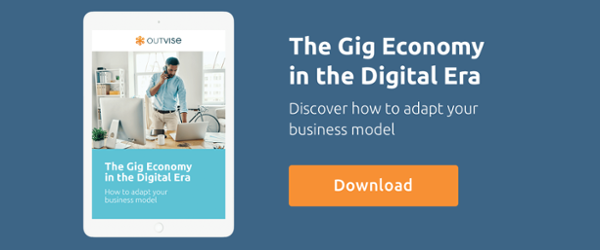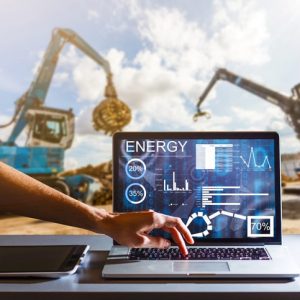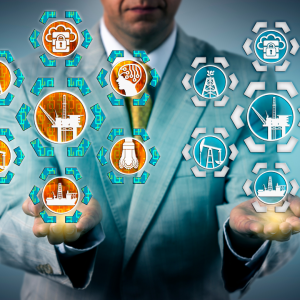Global energy demand is set to increase by a staggering 5% in 2021 and 4% in 2022. Although this jump is in part due to the post-pandemic economic bounceback, it reflects a larger trend. Between 2017 and 2018, energy demand grew by 2.3%, with CO2 emissions reaching a record high. Compared to pre-Industrial Revolution levels, global warming is projected to exceed 1.5 degrees celsius. If this goes any higher, it could be a severe threat to humans and the planet. These statistics are what drove the conception of net zero energy.
Net zero refers to an equilibrium where emissions are balanced with their removal from the atmosphere. The necessity of achieving net zero was underlined in the Paris Agreement on climate change, which compels countries to “achieve a balance between anthropogenic emissions by sources and removals by sinks of greenhouse gases in the second half of this century”. The imperative highlights the need for the use of renewable energy sources and the more efficient use of that energy. Moreover, various studies have shown that a renewable energy system is almost impossible without greater energy efficiency.
IoT will be an essential tool to achieve net zero energy. This is because IoT deploys technologies that use real-time data to optimize processes and decision making. As a result, the energy sector can transition from a dated centralised system to distributed, smart, and integrated networks. This is key when it comes to deploying renewable energy sources, particularly in regard to supplying energy at a local level and optimizing the grid.
Via big data collection and the use of intelligent algorithms, we can monitor the energy consumption patterns of different users and devices over different time scales. With this information, we can control that consumption more efficiently. Here’s a brief overview of the possible applications that can help achieve the net zero energy vision.
Table of Contents
Going to the source: IoT and energy generation
Reliability, efficiency, maintenance and, of course, environmental impact are the main issues surrounding dated power stations. The age of equipment is often the root of the problem; assets are sometimes more than 40 years old, very expensive, and difficult to integrate with new technologies and systems.
Although automated processes and data analysis has been used in the energy sector since the 1990s, developments in IoT are set to take these tools to the next level. IoT can contribute to reducing some of the challenges associated with old equipment, particularly downtime. By applying IoT sensors, connected devices are able to facilitate preemptive rather than reactive maintenance, increasing the reliability of this cumbersome equipment and making the facility far more efficient.
These benefits are proven; according to a 2015 technical report compiled by General Electric, an existing plant can save $50 million USD if equipped with IoT technologies. Meanwhile, a new plant of the same size could save $230 million USD during its lifetime. The application of IoT in new powerplants is key, especially in regard to renewables as reducing energy generation via fossil fuels is crucial.
However, weather-dependent or variable renewable sources pose new challenges for the grid. Matching the generation of energy with demand is the most significant; however, IoT systems offer opportunities to properly balance generation with demand. For example, the use of machine learning algorithms can balance the power output of a thermal power plant with in-house power generation, e.g. aggregating many small-scale solar panels.
As efficiency in the power sector is crucial to achieving the net zero energy goal, no facility new or old should be without IoT technologies. These opportunities extend beyond the power station itself, into the grid.
Precise demand management with the smart grid
Smart grids deploy dependable IoT technology to control and optimize energy generation and end usage. Via the use of smart meters, a smart grid facilitates a flow of data to efficiently distribute energy. For example, in a smart grid, the energy demand pattern of end users can be analyzed through an IoT platform.
This platform can measure everything from the time of mobile phone charging to the demand for electric cars. Then, the nearest battery charge station can allocate the right time slot to channel the optimal amount of energy to the area. Equally, authorities can apply long-term strategies. For example, the reduction of transmission losses in T&D networks via active voltage management is another scenario where IoT can help make the grid more efficient.
Furthermore, via constant monitoring, authorities can detect if energy demand exceeds the capacity of the grid at a given time. Therefore, with real-time data, energy generation can be scheduled to meet demand. In some regions, dynamic pricing tariffs have been considered for variable energy pricing. This will encourage end-users to consume energy in a more efficient manner, as prices at peak times will be higher.
Moreover, IoT can be applied in microgrids for some geographical areas or organisations. This is especially useful for facilities where the energy supply has to be constant and stable, say, for example, data centres. In such systems, data on the energy demand of any asset is fully accessible, ensuring the precise management of energy distribution.
The age of the smart city
Today, 50% of the world’s population live in cities. The rate of urbanisation brings with it many environmental concerns, such as water and air pollution and energy access. As a result, one of the main challenges we face today is to provide cities with clean, affordable and reliable energy. IoT provides solutions so factories, homes and offices can connect to the network and share real-time data on energy consumptions.
This enables the smart distribution of energy across urban areas. For example, if it’s found that a residential area consumes the most energy in the evening, then energy can be transferred from other sections to balance the system. This optimizes energy usage, minimises cost and cuts the risk of congestion in the grid. This theory can be extended to a whole host of other processes, including the management of telecoms networks or air quality monitoring.
IoT can go as far as to monitor individual buildings and objects. Infrastructure, transport, and utilities could be connected to sensors to ensure energy efficiency via the constant monitoring of data. For example, by monitoring traffic with IoT, traffic lights can be controlled for energy optimization. This data can also be used to devise public transportation or traffic management strategies.
Smart buildings: The building blocks of the smart city
A city comprises buildings with various uses, whether they be dwellings, commercial units, or factories. These buildings will use energy in different ways. For example, domestic energy consumption includes lighting, appliances, hot water, cooking and refrigeration.
Meanwhile, HVAC systems typically account for a large proportion of energy consumption in commercial buildings. Therefore, the management of HVAC systems is key to reducing electricity consumption. IoT devices can play an important role in controlling energy losses from HVAC systems. For example, in large offices, wireless thermostats can automatically adjust based on occupancy. The smart HVAC system could switch off AC units in unoccupied rooms, significantly reducing energy consumption.
IoT can also be applied to manage lighting systems in both domestic and commercial contexts. With IoT-based lighting systems, users will be alerted when energy consumption goes over standard levels. Furthermore, via the analysis of real-time data, load from high-peak will be shifted to low-peak levels. This makes a significant contribution to optimizing energy usage and reducing related emissions, creating the net zero building.
Cutting emissions with intelligent transportation
One of the major causes of air pollution in cities is the use of private vehicles instead of public transport. As opposed to a traditional transportation system where each system works independently, applying IoT technologies offers a global management system. All the components of the transportation system, including private and commercial vehicles, can be connected and their data processed.
This facilitates congestion control and smart parking systems, enabling passengers and drivers to select a more cost- and time-efficient transportation option. With these tools, we can incentivise city residents to use more environmentally friendly transport options, while enabling them to manage their schedules more efficiently. This can remarkably reduce CO2 emissions and other air pollutants emitted as a result of transportation.

Optimising industry with the smart factory
IoT can be deployed to reduce energy consumption while optimizing production in industry. In an IoT factory, data processing is the keystone of the entire system. Data is analysed and stored in the cloud platform to help managers make more efficient decisions. This intelligence is communicated via devices like tablets, computers, or smartphones.
This drives efficiency in various ways. For example, in traditional factories, monitoring processes require human intervention and significant resources. Generally speaking, quality control occurs at the end of the production line, which leads to resource-intensive corrections upstream. However, with an IoT system, factories can deploy an agile and flexible system to recognise failures as and when they happen. Therefore, suitable action can be taken to avert wasteful production and the associated wasted energy.
Furthermore, installing sensors on each component of an industrial site can help detect malfunctioning components. In terms of monitoring and maintaining assets, the biggest problem in factories is the depreciation of machinery. With appropriate IoT tools, strategic maintenance can reduce the wear and tear of assets. This simply means machinery lasts longer and suffers fewer failures.
Moreover, the failures that cause energy loss can be anticipated and tackled. For instance, IoT-based systems can be used to optimise supply chains allowing for collaboration between customers, manufactures, and companies. For example, the system will closely monitor demand patterns to produce an optimal volume of products. Therefore, energy consumed during the process of storing excess products as well as will be significantly reduced.
The challenges that lie ahead
Applying IoT systems to enhance energy sustainability is key to achieving the net zero goal. However, this isn’t to suggest IoT is an out-of-the-box solution; we still need to continue to optimise and enhance these systems, to ensure they’re a net zero technology themselves. Running billions of connected devices requires a significant amount of energy, so it is essential the gains aren’t cancelled out by the energy consumed.
To address this challenge, we need low-carbon and efficient communication networks. Fortunately, these necessity has led to the development of green IoT of G-IoT. Essentially, G-IoT uses energy-efficient processes throughout the product’s life cycle from design to production, deployment, and ultimately disposal.
For example, radio optimization techniques, such as modulation optimization can be applied to reduce the power consumption of the nodes. Equally, green M2M communications enable the adjustment of power transmission to the minimum level, facilitating more efficient protocols via algorithmic and distributed computing techniques. Cluster architectures or multi-path routing can also provide more energy-efficient routing techniques.
Harness efficiency to achieve net zero energy
Energy efficiency is absolutely key to cutting carbon emissions and reaching the net zero goal. The large-scale deployment of renewable energy sources necessitates more intelligent and distributed energy systems. In this respect, technologies such as IoT can help the energy sector transform from a central, hierarchical supply chain to a decentralized, smart, and optimized system.
With these systems, we can make every element of the way we live smarter. From an IoT production line to a smart home, intelligent traffic networks and beyond, we can transform the way we consume energy. These benefits won’t only improve energy efficiency; they also have the potential to save time, money, and enhance the quality of life in cities globally.
So long as the IoT deployed is as energy efficient as the effects it produces, we can harness this technology to avert the climate crisis. A net zero future is within reach – organisations, local authorities and governments just need to throw all their weight behind green innovation.
IoT presents a fantastic opportunity to revolutionize the way we do things. But you need the right person on your team to harness that potential and make it a reality. Check out our highly qualified experts and get more details on how IoT can transform your business.
Hardware Design Engineer, IoT Solutions Architect, and Entrepreneur. Emmanuel is currently an ML/IoT hardware Design/ Architecture Specialist at VisionX; working in the Sight team, developing computer vision solutions being used by several fortune 500 companies.




No comments yet
There are no comments on this post yet.